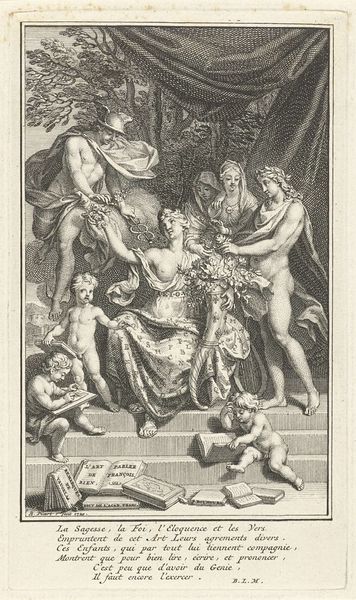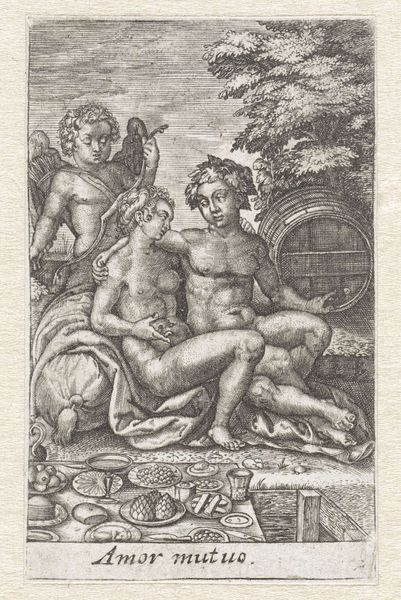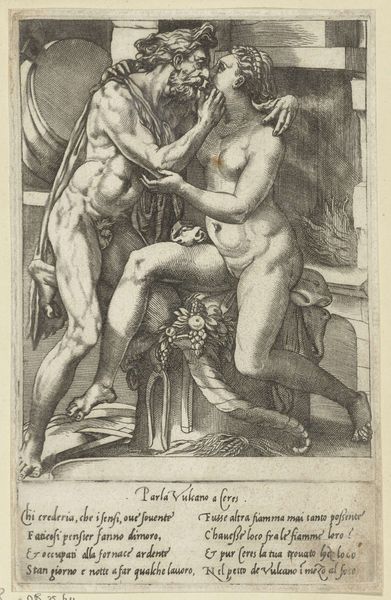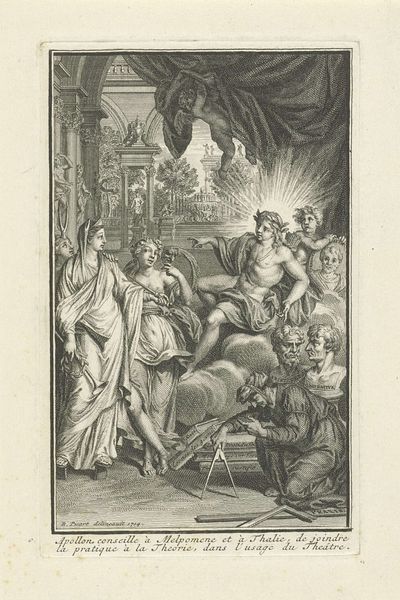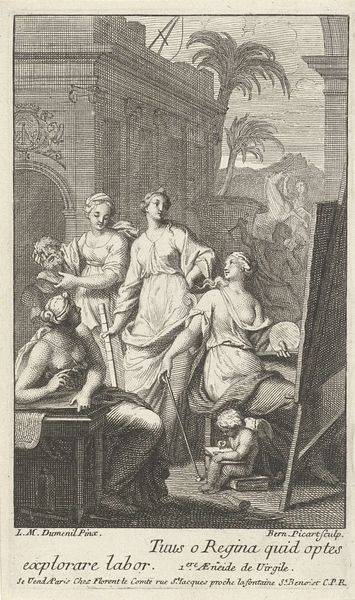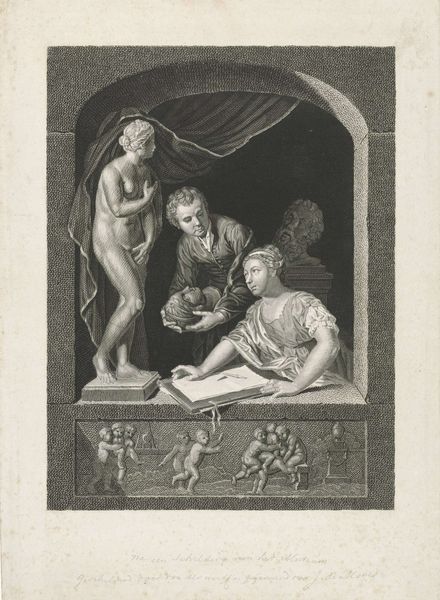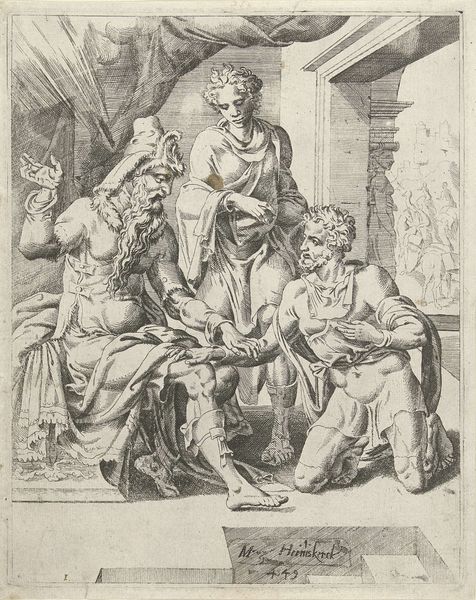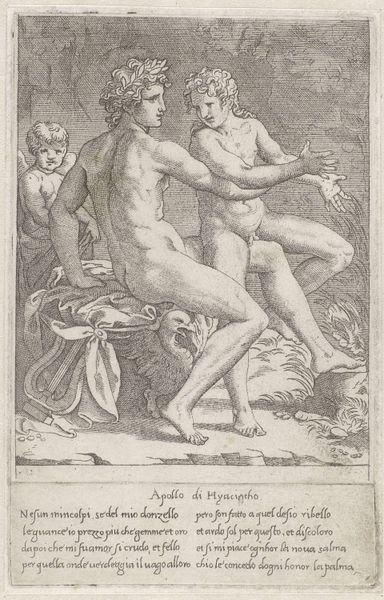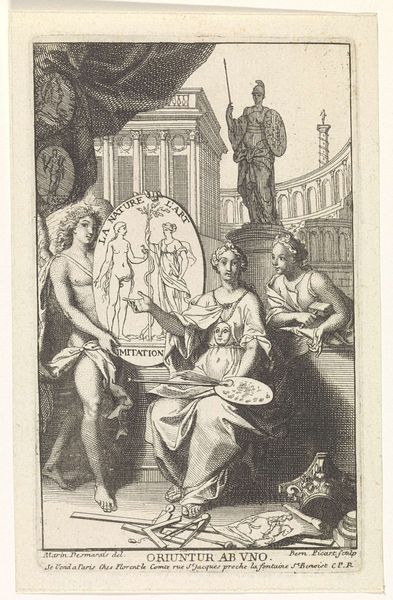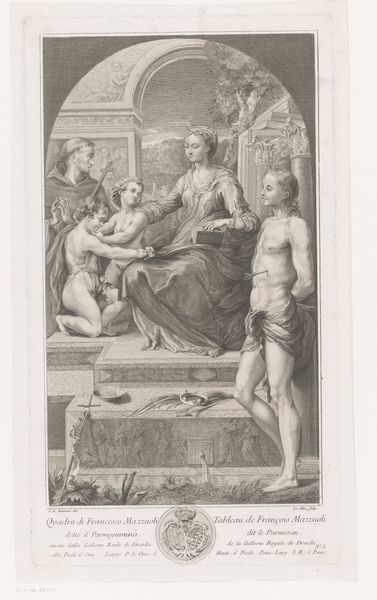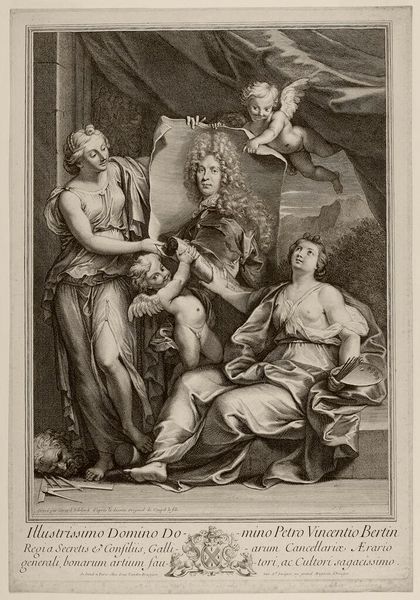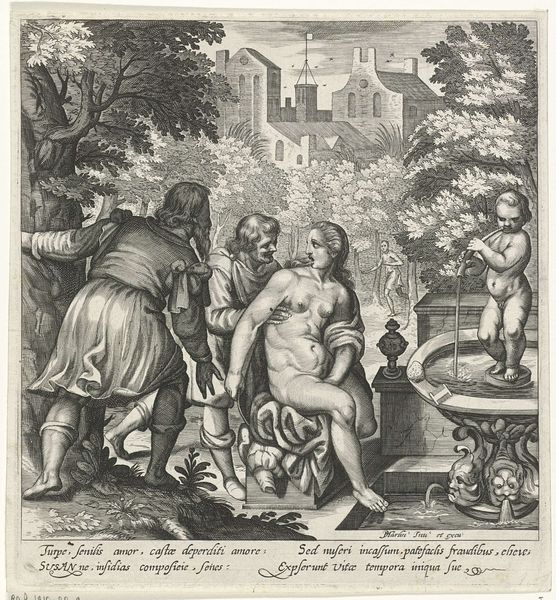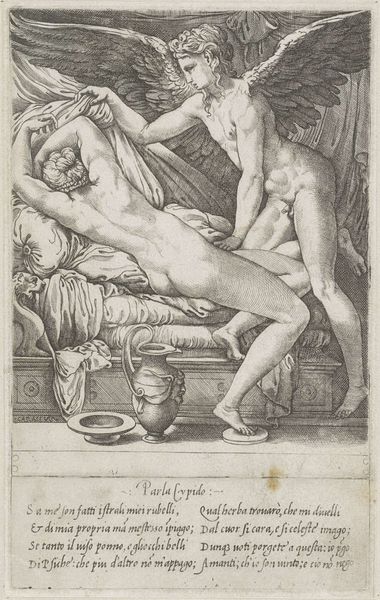
print, engraving
#
portrait
#
baroque
# print
#
old engraving style
#
figuration
#
portrait drawing
#
history-painting
#
northern-renaissance
#
engraving
Dimensions: height 262 mm, width 191 mm
Copyright: Rijks Museum: Open Domain
Curator: Here we have Wenceslaus Hollar's "Portret van Amalia van Solms," an engraving dating back to 1639, currently housed at the Rijksmuseum. Editor: Immediately striking! There’s an odd balance between the stark realism of the seated figure and the allegorical, almost theatrical, presentation behind her. The contrast between the fine, delicate lines forming the woman's dress and face versus the voluptuous curves and shadowing of the other figures…it’s captivating and unsettling all at once. Curator: Indeed. Hollar, as a printmaker, was deeply influenced by the socio-political landscape of his time. Amalia van Solms, a prominent figure in the Dutch Republic, is presented not just as an individual but as an emblem of wealth, honor and prosperity, virtues alluded to in the engraved text. Note the visual association with fecundity and reward. The women in the background offer not material wealth, but perhaps bountiful success as a noble matriarch, emphasized by the fruit she holds in her hand. Editor: You point to some really fascinating layers. Formally speaking, the perspective seems a bit flattened, almost like a stage set. The drapes create depth without actually providing it and direct your focus squarely on Amalia, whose confident stare emphasizes that point. I keep returning to the drapery; those repeated patterns are hypnotic. Curator: The drapery, besides its compositional function, hints at the Dutch Republic’s burgeoning global trade. Patterns and textiles were potent status symbols in 17th-century Dutch society and her elevated positioning here implies a commentary on Dutch cultural identity being intimately linked to international commerce. Editor: It’s fascinating how the medium – engraving – informs our experience. The stark black and white forces us to focus on line and form, enhancing the almost architectural quality of the composition. Curator: Precisely! The print medium democratized the portrait, allowing wider circulation of Amalia's image and, by extension, the values associated with her. It was a powerful tool for shaping public perception. Editor: I'll leave thinking about that interplay between sharp rendering and soft volume, so well rendered by Hollar’s mark making, with a focus on line work and symbolic messaging of that singular image of the Dutch golden age. Curator: A compelling example of how an image, through its form and historical context, can speak volumes about power, society, and identity, leaving us, the viewer, to consider our own present.
Comments
No comments
Be the first to comment and join the conversation on the ultimate creative platform.

